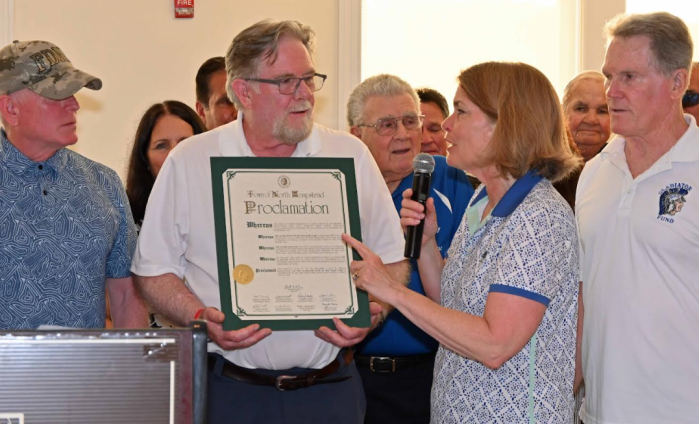A group of civil rights advocates presented their plans for “reimagining public safety and policing on Long Island” to the Nassau County Legislature on Wednesday, 36 days before the county must submit its final police reform plan to New York State.
Members of three advocacy coalitions — Long Island Advocates for Police Accountability (LIAFPA), Long Island United to Transform Policing & Community Safety (LI United), and United for Justice in Policing Long Island (UJPLI) — authored the 311-page document called “The People’s Plan” based on input from experts and the community, they said. More than 30 Long Island organizations and 200 individuals have endorsed the plan.
“The differential treatments and disparities that exist in Nassau County are things that we were not afraid to address in ‘The People’s Plan,’” said Fred Brewington, a Hempstead-based civil rights attorney and member of LIAFPA. “The document that was provided by the county executive, which was not based on collaboration … is not one which addresses that issue forthrightly.”
“The People’s Plan” first offers the organizations’ response to Nassau’s police reform plan, which Nassau Police Commissioner Patrick Ryder presented to the legislature last month. Nassau’s plan includes use of body cameras, more police officer training, a mentorship program to increase diversity in the ranks, collection of data, and an emphasis on transparency.
“My police reform plan calls for transparency, accountability, and a strengthened commitment to community-based policing in Nassau County,” Nassau County Executive Laura Curran said in a statement.
However, activists argue that the county’s plan does not address root causes of crime and structural racism in policing.
“We don’t want you to blame the racial disparities on the individual police officers and think that body cameras and a little anti-bias training will fix this,” said Tracey Edwards, Long Island Regional Director of the NAACP. “This is not a ‘bad apples’ theory, this is structural and institutional policies that have been there over time that the officers are following the rules.”
“The People’s Plan” includes 12 sections that address policies in different areas of policing, including crisis response, traffic enforcement, transparency and accountability issues, and handling complaints. It also covers handling of hate crimes, treatment of transgender, intersex, and non-binary people, and language access, as well as officer wellness and education.
Additionally, the plan calls for removing police officers known as school resource officers from school buildings. It also recommends instating the Statistics and Transparency (STAT) Act, a civilian complaint review board, and unbiased police inspector general to provide oversight of the department.
After the advocates provided an overview of each section of “The People’s Plan,” they answered questions from each of the legislators and discussed parts of the plan for more than two hours. Much of the discussion focused on whether police officers belong in school buildings.
“Maybe some of us were a little uncomfortable tonight, and that was the whole point of this,” said Legislator Denise Ford of Long Beach. “There are parts of [“The People’s Plan”] that warrant more conversation and consideration. I commend the hard work and dedication of everyone involved in this.”
To read “The People’s Plan,” visit liafpa.org/the-peoples-plan.
To read Nassau’s plan for police reform, visit nassaucountyny.gov/eo203.


































